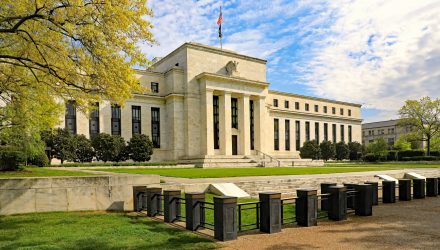Stock indexes rallied ahead of the Federal Reserve minutes from last month, and are attempting to digest the report as stocks trade-off their highs, just minutes after it was released this afternoon.
The prepared statement for release at 2 pm EST noted the continuing pressure that financial markets and the economy are facing, and that the central bank is prepared to do what is necessary to bolster the economy accordingly.
“The Federal Reserve is committed to using its full range of tools to support the U.S. economy in this challenging time, thereby promoting its maximum employment and price stability goals. The coronavirus outbreak is causing tremendous human and economic hardship across the United States and around the world. The virus and the measures taken to protect public health are inducing sharp declines in economic activity and a surge in job losses. Weaker demand and significantly lower oil prices are holding down consumer price inflation. The disruptions to economic activity here and abroad have significantly affected financial conditions and have impaired the flow of credit to U.S. households and businesses,” the Fed said in a prepared written statement.
The Fed minutes report noted, however, that economic conditions have ameliorated somewhat based on actions the bank took earlier this year, which has resulted in mitigated volatility and an improvement in equity prices.
“Financial conditions had shown notable improvement over recent weeks. Equity price indexes were up substantially from the lows of late March, safe-haven demands for the dollar had receded, and measures of realized and implied volatility across markets had diminished. Market participants pointed to swift and forceful actions taken by the Federal Reserve, coupled with strong fiscal measures, and some indications of a slowing in the spread of the coronavirus (COVID-19) in major economies as factors contributing to these developments,” the report said.
However, despite these improvements, the Fed minutes underscored the fact that there is still heightened uncertainty and economic instability in markets, as investors appraise how the coronavirus pandemic will proceed, and what the extent of the ensuing economic fallout will entail. This economic instability could result in continuing financial pressures and stymied trade activity in capital markets.
“Market participants remained very uncertain about the economic outlook, and contacts highlighted an array of remaining risks, including those in corporate credit markets, emerging markets, and mortgage markets. In corporate credit markets, concerns about potential defaults were rising, and ratings agencies had put on negative watch or downgraded many issuers. In emerging markets, the steep decline in commodity prices was exacerbating financial pressures for some emerging market economies (EMEs), which were also facing strains arising from capital outflows and a reduction in trade activity. And in mortgage markets, the likely increase in mortgage delinquencies associated with forbearance policies and an eventual rise in defaults were sources of concern for bank and nonbank lenders,” the report added.
The Fed minutes also noted that the central bank’s decision to purchase more Treasurys and mortgage-backed securities was having a positive effect on the market, and projected that the rate of the purchases would likely decline starting next month, but holdings could expand throughout 2020 and possibly into 2021.
“Since mid-March, at the direction of the FOMC, the Desk had purchased very large quantities of Treasury and agency mortgage-backed securities (MBS) in order to support the smooth functioning of these critical markets. The Desk evaluated a broad array of indicators to assess market functioning. These indicators suggested considerable improvement in market functioning, and the Desk gradually scaled back the pace of purchases accordingly. Market participants anticipated that the pace of purchases would slow after the June meeting, but they expected that outright securities holdings in the SOMA portfolio would continue to expand at least through the end of the year,” said the minutes.
Finally, the Fed cautioned that a second wave of the coronavirus could further debilitate markets and thrash the GDP.
“In this scenario, a second wave of the coronavirus outbreak, with another round of strict restrictions on social interactions and business operations, was assumed to begin around year-end, inducing a decrease in real GDP, a jump in the unemployment rate, and renewed downward pressure on inflation next year,” the summary said.
Stock Index ETFs, have remained in the green throughout the interpretation of the report so far, with the SPDR S&P 500 ETF Trust (SPY) up 1.62%, the SPDR Dow Jones Industrial Average ETF (DIA) adding 1.29% on the day, and the Invesco QQQ Trust (QQQ) advancing 1.58%.
Now investors are waiting to see if those gains can hold into the close Wednesday, or if the continued volatility that has been a hallmark this week may reemerge.
For more market trends, visit ETF Trends.
